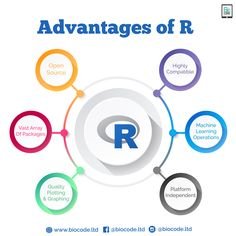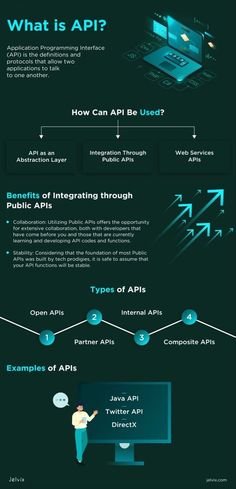Creating Ontology Graph SQL: A Comprehensive Guide

Ontology graphs are essential tools for organizing and understanding data relationships in a structured format. Combining these graphs with SQL, a powerful query language, enables efficient data management and retrieval. In this article, we will explore creating ontology graph SQL, discussing its significance, practical applications, and the step-by-step process to build ontology graphs using SQL.
Table of Contents
What Is an Ontology Graph?
An ontology graph represents a structured framework of concepts and their relationships within a specific domain. It provides a visual and logical representation of entities, enabling better understanding and interaction with data.
Ontology graphs are commonly used in areas like artificial intelligence, semantic web, data integration, and more. By leveraging SQL, creating ontology graph structures becomes both scalable and efficient, making it ideal for handling large datasets.
Why Use SQL for Creating Ontology Graphs?
Efficiency in Querying Relationships
SQL excels in managing relational data. When creating ontology graph SQL, SQL’s capabilities for handling complex queries and relationships make it a natural choice. It allows developers to define, query, and manipulate data seamlessly within the ontology framework.
Scalability and Flexibility
With SQL’s inherent ability to scale across databases of varying sizes, ontology graphs built with SQL can accommodate growth in data and complexity. This ensures that your system remains robust and adaptable to changing requirements.
Integration with Existing Systems
SQL integrates easily with existing relational databases and systems, making it easier to incorporate ontology graphs into your current data ecosystem. Creating ontology graph SQL can complement your existing workflows, enhancing data accessibility and decision-making.
Key Components of Ontology Graphs

Before diving into creating ontology graph SQL, it’s crucial to understand the core components:
Nodes
Nodes represent entities or concepts within the ontology. For example, in a healthcare domain, nodes could include “Patient,” “Doctor,” and “Treatment.”
Edges
Edges define relationships between nodes. These could represent actions, dependencies, or hierarchies, such as “Doctor treats Patient” or “Treatment includes Medication.”
Properties
Properties provide additional information about nodes and edges. For instance, a “Patient” node could have properties like “Age” and “Medical History.”
Constraints
Constraints ensure data integrity and accuracy. When creating ontology graph SQL, constraints such as primary keys, foreign keys, and unique values play a vital role in maintaining a consistent ontology structure.
Steps for Creating Ontology Graph SQL
Step 1: Define the Ontology Structure
Begin by identifying the entities and relationships relevant to your domain. For instance, in an e-commerce domain, entities could include “Customer,” “Product,” and “Order.” Relationships might be “Customer places Order” or “Order contains Product.”
Step 2: Design the Database Schema
Translate your ontology structure into a relational schema. Use tables to represent nodes and relationships. For example:
- A “Customers” table with columns for CustomerID, Name, and Email.
- An “Orders” table with columns for OrderID, CustomerID, and Date.
- A “Products” table with columns for ProductID, Name, and Price.
Step 3: Populate the Data
Insert data into your schema to create the base structure for your ontology graph. Use SQL’s INSERT statements to add nodes and define relationships.
Example:
INSERT INTO Customers (CustomerID, Name, Email) VALUES (1, 'John Doe', 'john@example.com');
INSERT INTO Orders (OrderID, CustomerID, Date) VALUES (101, 1, '2023-12-01');
INSERT INTO Products (ProductID, Name, Price) VALUES (501, 'Laptop', 1200.00);
Step 4: Define Relationships
Establish relationships between entities using foreign keys and JOIN operations. This step is crucial when creating ontology graph SQL to link data meaningfully.
Example:
SELECT Customers.Name, Orders.Date, Products.Name
FROM Customers
JOIN Orders ON Customers.CustomerID = Orders.CustomerID
JOIN OrderDetails ON Orders.OrderID = OrderDetails.OrderID
JOIN Products ON OrderDetails.ProductID = Products.ProductID;
Step 5: Visualize the Ontology Graph
Use visualization tools or libraries to represent the ontology graph visually. Tools like Graphviz or Neo4j’s integrations can help in rendering graphs based on your SQL data.
Advanced Techniques for Creating Ontology Graph SQL
Recursive Queries
Recursive queries in SQL, such as Common Table Expressions (CTEs), can help traverse hierarchical relationships in ontology graphs.
Example:
WITH RECURSIVE Subcategories AS (
SELECT CategoryID, Name, ParentCategoryID
FROM Categories
WHERE ParentCategoryID IS NULL
UNION ALL
SELECT c.CategoryID, c.Name, c.ParentCategoryID
FROM Categories c
INNER JOIN Subcategories s ON c.ParentCategoryID = s.CategoryID
)
SELECT * FROM Subcategories;
Indexing for Performance
When working with large datasets, indexing is critical for optimizing query performance. Use indexes on frequently queried columns like foreign keys and primary keys.
Example:
CREATE INDEX idx_customer_id ON Orders (CustomerID);
CREATE INDEX idx_product_id ON OrderDetails (ProductID);
Data Validation
Ensure data quality by implementing validation rules in SQL. For instance, use CHECK constraints to enforce value ranges or data types.
Example:
ALTER TABLE Products
ADD CONSTRAINT chk_price_positive CHECK (Price > 0);
Applications of Ontology Graphs in SQL

Knowledge Representation
Creating ontology graph SQL enables robust knowledge representation for industries like healthcare, finance, and education. It aids in organizing and retrieving domain-specific knowledge efficiently.
Semantic Search
Ontology graphs enhance search capabilities by incorporating relationships and context into query results. For instance, searching for “cardiologists in New York” can return relevant results by leveraging ontology relationships.
Data Integration
Incorporating ontology graphs into SQL allows seamless integration of data from multiple sources, ensuring consistency and reducing redundancy.
Challenges in Creating Ontology Graph SQL
Complex Relationships
Defining and managing intricate relationships can be challenging, especially in large-scale ontologies. Proper schema design and query optimization are essential.
Scalability
As the ontology graph grows, maintaining performance becomes crucial. Techniques like indexing and partitioning can help address scalability issues.
Visualization Limitations
While SQL excels in data management, it lacks native visualization capabilities for ontology graphs. Third-party tools or libraries are often required for this purpose.
Also read Eating American Food in the Philippines Essay
Conclusion
Creating ontology graph SQL is a powerful approach to organizing and understanding complex data relationships. By leveraging SQL’s capabilities, developers can build scalable, efficient, and flexible ontology graphs tailored to various domains. With proper planning, design, and optimization, ontology graphs can unlock new possibilities in data management and analysis.




